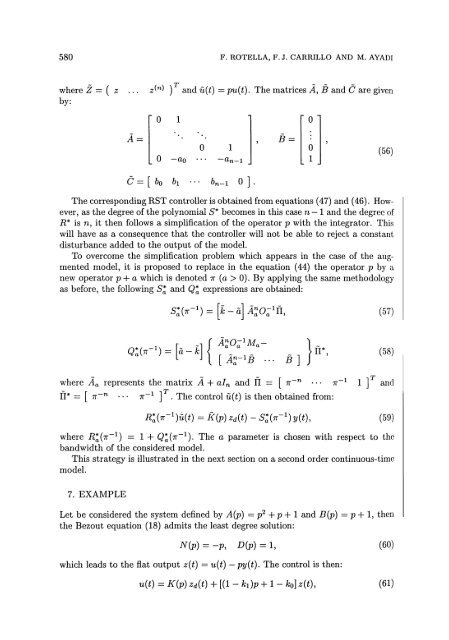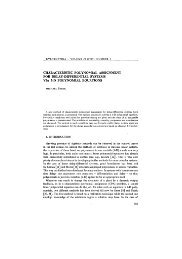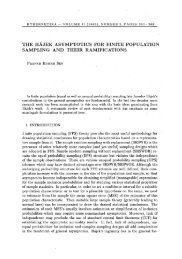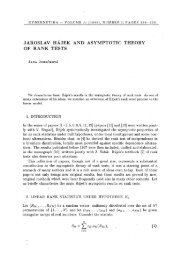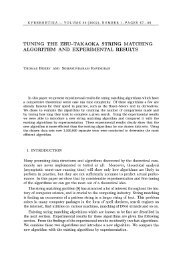polynomial controller design based on flatness - Kybernetika
polynomial controller design based on flatness - Kybernetika
polynomial controller design based on flatness - Kybernetika
Create successful ePaper yourself
Turn your PDF publications into a flip-book with our unique Google optimized e-Paper software.
580 F. ROTELLA, F. J. CARRILLO AND M. AYADI<br />
where Z = ( z ... z^ ) and u(t) = pu(t). The matrices A, B and C are given<br />
by:<br />
0 1<br />
0 1<br />
0 —a 0<br />
• • • —a n<br />
_i<br />
Č=[b 0<br />
Һ ^n-l o]<br />
B<br />
(56)<br />
The corresp<strong>on</strong>ding RST <str<strong>on</strong>g>c<strong>on</strong>troller</str<strong>on</strong>g> is obtained from equati<strong>on</strong>s (47) and (46). However,<br />
as the degree of the <str<strong>on</strong>g>polynomial</str<strong>on</strong>g> S* becomes in this case n — 1 and the degree of<br />
R* is n, it then follows a simplificati<strong>on</strong> of the operator p with the integrator. This<br />
will have as a c<strong>on</strong>sequence that the <str<strong>on</strong>g>c<strong>on</strong>troller</str<strong>on</strong>g> will not be able to reject a c<strong>on</strong>stant<br />
disturbance added to the output of the model.<br />
To overcome the simplificati<strong>on</strong> problem which appears in the case of the augmented<br />
model, it is proposed to replace in the equati<strong>on</strong> (44) the operator p by a<br />
new operator p + a which is denoted -K (a > 0). By applying the same methodology<br />
as before, the following S* and Q* a<br />
expressi<strong>on</strong>s are obtained:<br />
s:{n- i ) = [k-á]Á n ao- i ů, (57)<br />
A^O^Ma-<br />
Q:(тr- i ) = [ă-.%]<br />
ЃГ, (58)<br />
[Á n ~ l B •• B<br />
n<br />
where A a<br />
represents the matrix A + al n<br />
and ft = [ it<br />
7Г ^ 1 ] and<br />
ft* = [ TT-" • - - 7r -- x J 1 . The c<strong>on</strong>trol u(t) is then obtained from:<br />
K{n- l )u{t) = K{p) z d<br />
{t) - S^n- 1 ) y{t), (59)<br />
where R^n" 1 ) = 1 + Q^71 " -1 )- The a parameter is chosen with respect to the<br />
bandwidth of the c<strong>on</strong>sidered model.<br />
This strategy is illustrated in the next secti<strong>on</strong> <strong>on</strong> a sec<strong>on</strong>d order c<strong>on</strong>tinuous-time<br />
model.<br />
7. EXAMPLE<br />
Let be c<strong>on</strong>sidered the system defined by A(p) = p 2<br />
+ p + 1 and B(p) = p + 1, then<br />
the Bezout equati<strong>on</strong> (18) admits the least degree soluti<strong>on</strong>:<br />
N{p) = -p, D{p) = l,<br />
(60)<br />
which leads to the flat output z{t) = u{t) —py{t). The c<strong>on</strong>trol is then:<br />
u{t) = K{p) z d<br />
{t) + [{1 - ki)p +l-k 0<br />
)<br />
z{t),<br />
(61)


